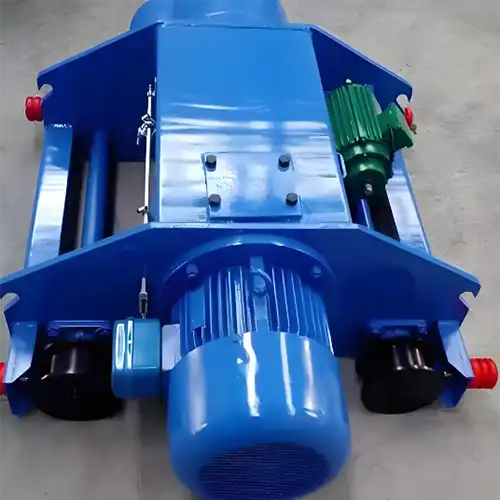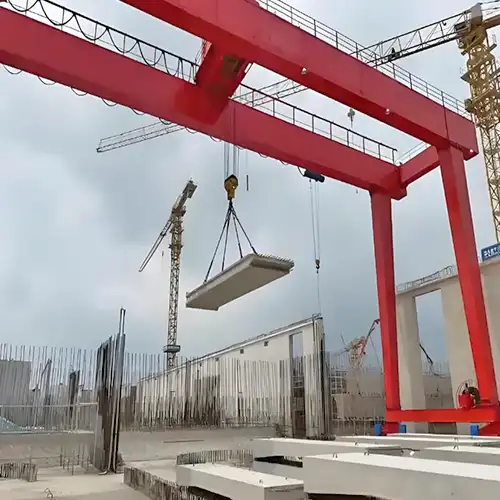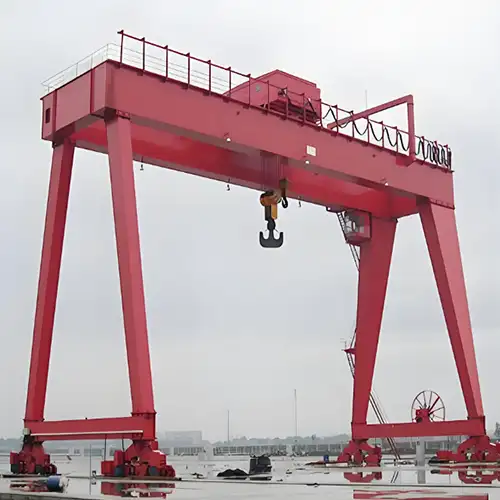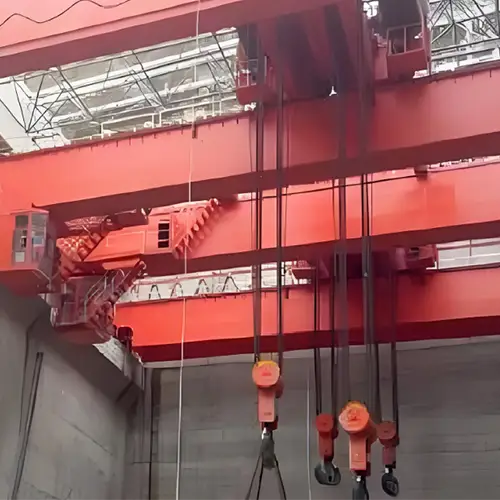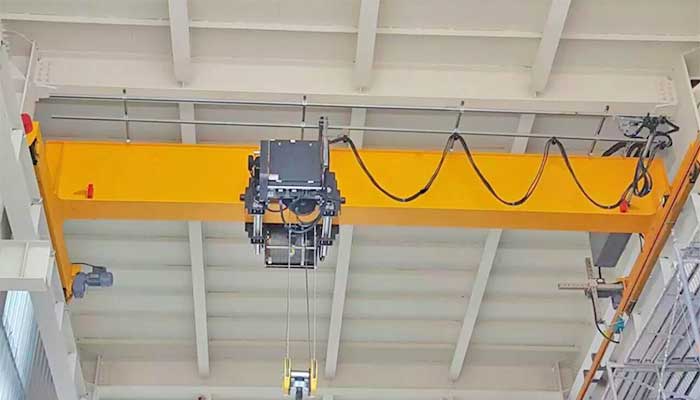
Overhead Crane Load Tests & Inspection for Commissioning & Acceptance
What is overhead crane load test? What are the regulations of crane load test? What are crane tests for overhead crane commissioning and acceptance? More on overhead crane load tests & inspections now.
Every new or modified crane must pass some rated load tests. This criterion goes hand in hand with ensuring that the overhead cranes are in good working order and that no fatalities occur. Let's take a look at a few of these needs and see how important they are in industrial settings.What is a load test?
Except when the manufacturer advises it, a certified and rated load test means that test loads cannot exceed 125 percent of the rated load. Load test reports are then filed in the relevant locations for easy access and review by designated employees.
Why is the load test so important?
We cannot afford to disregard any component of the maintenance procedure or equipment inspection while considering operational and facilitation safety. Testing equipment before using it in various tasks is an important aspect of this equipment examination. Leading crane manufacturers and service providers across the world are dedicated to offering high-quality testing and maintenance services, and industries must rigorously seek them out.
Cranes are an essential component of any production floor. They are responsible for lifting and rigging big weights in the workplace, together with other equipment such as hoists and monorails. To extract maximum output, every workplace must ensure that its cranes are operating at peak efficiency. As a result, manufacturers must periodically install new cranes or make necessary modifications to existing cranes.
Regulations from OSHA
The most significant aspect is that it is a required procedure. You must know the most important reason if you are in charge of the facility. You must adhere to OSHA regulations (Occupational Safety and Health Administration).
According to OSHA, you must conduct three types of inspections. It needs to be done with overhead cranes. You must undertake three types of inspections, according to OSHA. It must be done with overhead crane equipment.
The initial inspection is the first step. This inspection of your new equipment is required by law. Then there's the routine inspection. It must be done on a regular basis. It can be done on a weekly or monthly basis. The service class of the device will determine this. Finally, you must choose to get your home inspected on a regular basis. This inspection should be done semi-annually, manually, or quarterly. It will also be determined by the equipment's service class.
Detect problems and bottlenecks
It's important to understand that load testing isn't solely for the goal of preventing injuries. It can give manufacturing and industrial facility employees crucial information. They will pay attention to the crane's operational performance and anticipate any bottlenecks that occur on a regular basis.
You can determine the hidden issues with the help of this procedure. These issues are to blame for the cranes' slow performance. Furthermore, it is capable of identifying the overhead crane's performance flaws. You'll be able to tell whether it requires any repairs or not. You may also see why purchasing new lifting equipment is necessary.
Avoid emergencies
Another crucial aspect of load testing is emergency preparedness. It could also result in unintended consequences. It will be difficult for the operators to understand the developing fault without load testing. If you wait until it's too late, you'll be more likely to fail.
Cranes can carry enormous loads on a daily basis. As a result, the likelihood of wear and tear is quite considerable. It will happen in the hoists and cranes, to be precise. You can pinpoint all of the functionality concerns if you use OSHA's load testing capabilities. Otherwise, problems may arise, posing a risk of injury to your staff. As a result, you must address and correct them as quickly as feasible.
Maintain the overhead crane equipment
Managers are often surprised by the results of load testing. It encourages managers to include maintenance operations in their daily routines.
You'll have plenty of opportunity to study the crane's performance and functioning while load testing. You might think of it as the finest opportunity to ensure that routine maintenance is performed on a regular basis. It will also guarantee that upkeep is adequate.
Enhances productivity
Load testing will improve productivity, which is an important aspect of any business. Managers can use this technique to identify areas where they need to make improvements. As a result, the facilities will be more productive.
The equipment may have a few minor flaws. Nothing beats load testing when it comes to identifying those flaws. You can correct the mistakes, and your equipment will grow more capable. Productivity will increase as it becomes more efficient.
We all recognize the need of increasing production. You can use it to boost the profitability of your manufacturing or industrial activities. It will be required for long-term development.
Main crane testing standards of OSHA
OSHA has some testing requirements that you must adhere to.You should appoint a capable operator as a designated person. The individual must be qualified and knowledgeable in their field. He or she should have specialized training as well as prior experience.
- The trip setting of the hoist-limit device will be determined by some tests. You must test it with an empty hook that travels at a constant pace from increased to maximum.
- Before employing new or modified cranes, you must test them. There are a few things you should look into. Check hoisting, lowering, trolley travel, bridge travel, safety devices, locking, and limit switches, for example.
- You must find the actuation mechanism for the upper limit device. You may make your device trip in any situation this way. It will also ensure that there would be inadequate time to avoid the load block or hook colliding with cranes or trolleys.
These are the reasons why overhead cranes must be load tested. It will ensure the safety of your employees. Furthermore, it will boost your company's overall productivity. When you undertake load testing, you won't have to worry about serious mishaps. Take a look at those reasons and work in accordance with them.
Rated load tests specifications
- New and existing equipment: According to OSHA, all new gantry and overhead cranes installed or constructed after August 31, 1971 must comply with the relevant design specifications of the American National Standard Safety Code for Overhead and Gantry Cranes.
- For made-to-order changes: An overhead crane can be made-to-order and then re-rated if the alterations and the structure that supports them are properly inspected based on the new rated load. These tests should be carried out by qualified people, engineers, or the equipment maker. According to OSHA rules, the crane must be inspected and the new rated load must be displayed.
Crane test and crane inspection for overhead crane commissioning and acceptance
Crane inspection before Commissioning
Before commissioning a newly installed or overhauled overhead crane, we should assemble a team of skilled electricians, fitters, crane operators, and other technical personnel to thoroughly inspect the crane. The following are the key contents of the crane inspection:
1) Before inspecting the overhead crane, turn off the power supply. Check and ensure that: all fasteners are firm, according to the crane drawings and technical specifications;
- The safety equipment and devices have been fully installed;
- The metal frame of the overhead crane is in good shape, with no deformation;
- The wire rope on the pulley and drum is securely fastened.
2) Double-check that all rotating devices are properly placed and that they can revolve freely. Turn the wheel by hand to check the output shaft's movement and the revolving of the driving organization, ensuring that everything is in good working order and that nothing is stuck.
3) The overhead crane brake should be precise and consistent. Two brakes placed for the overhead crane's running mechanism should be consistent with each other.
4) According to the guidelines, all lubricating points should be lubricated with the requisite lubricating oil, and the amount of oil on the reducer should be within the prescribed range.
5) Inspecting electrical apparatus
- Using a megohmmeter, check the circuit's insulation resistance.
- Ensure that all electrical equipment meets the requirements.
- The controller is adaptable and dependable in the situation of a disconnect power circuit, assuming the operating line is correct.
- The electromagnet, limit switch, and emergency switch should all function normally.
Preparation for Crane Testing Prior to Commissioning
Clean up the overhead crane test site and ensure sure no one who isn't supposed to be there is allowed in.
Prepare a testing object that is 1.25 times the overhead crane's rated capacity. It is preferable to weigh it ahead of time.
Using a steel wire rope or a belt to lift something.
- Steel line (Jean line), plumb, and measuring tool are some of the tools used to inspect bending.
- Equipment manager, engineer, technician, and operator should all be on the testing team.
- Test employees should be aware of the commissioning objectives, requirements, and techniques, as well as the appropriate division of labor. An experienced operator should be assigned to the trial operation.
Overhead Crane Commissioning
The overhead crane operation test can begin after the inspection and preparation. The no-load test, static load test, and movement test are the three steps in the overhead crane operating test.
- No-load testing of overhead cranes-The crane trolley travelling test, overhead crane travel test, and no-load hook test are the three sections of the overhead crane no-load test.
- Travel test for trolleys and hoists-Start the overhead crane trolley/hoist, and make the trolley/hoist run more than three times back and forth along the rail.
- Test the limit switch for sensitivity and dependability.
- The driven wheels must always be in contact with the rail; the distance between the positive wheel and the rail should not exceed 1mm.
- Test of crane travel-Make the overhead crane run more than three times back and forth along the rail. Each time you run, you must cover at least 3 meters.
- The overhead crane's wheels must not become trapped on the rail.
- Hook test with no load-More than three times, lift the empty hook up and down.
- Examine the braking system and the lifting limits.
- All traveling and lifting mechanisms must function in a stable manner, with no vibration or shock.
Overhead crane static load tests
- The no-load test must be qualified before the static load test.
- Place the crane at one end of the rail. The trolley/hoist raises the rated capacity and travels back and forth along the crane girder.
- Set the trolley to one end of the crane girder and unload the cargo.
- Placing a plumb in the center of the crane girder to check the initial bending degree. Come to the middle of the girder with the operating trolley/hoist, lift loads 1.25 times their rated capacity up to 100mm, and maintain this condition for 10 minutes on both sides of the girder.
- Then look at the bending degree once more.
- Then unload the capacity to see if the girder has changed permanently. This test should be repeated three times.
- After that, look at the ultimate bending degree, which should be greater than 0.8L/1000.
- Place the trolley/hoist stop in the middle and raise the rated capacity to test the girder's downwarping resilience, which should not exceed L/700. The resilience downwarping for a single girder overhead crane should not exceed L/600.
Movement load tests
- Lift loads that are 0.5, 0.7, 1, and 1.1 times the overhead crane's rated capacity.
- Make many trips with the trolley/hoist.
- Start the crane traveling mechanism and run the overhead crane many times if no problems are found.
- The lifting mechanism must work for 10-15 minutes, and the traveling mechanism must work for 20 minutes or 10 times.
- Ensure that the brake is operable, that the reducer is free of noise and vibration, that the temperature is normal, and that there is no oil leaking; and that the lubrication system is in good working order.
- Ensure that all limiters and safety devices are in working order.
- And the electrical box is in good working order; the temperature is normal, there is no noise or vibration, and the cable/line connections are not burned.
